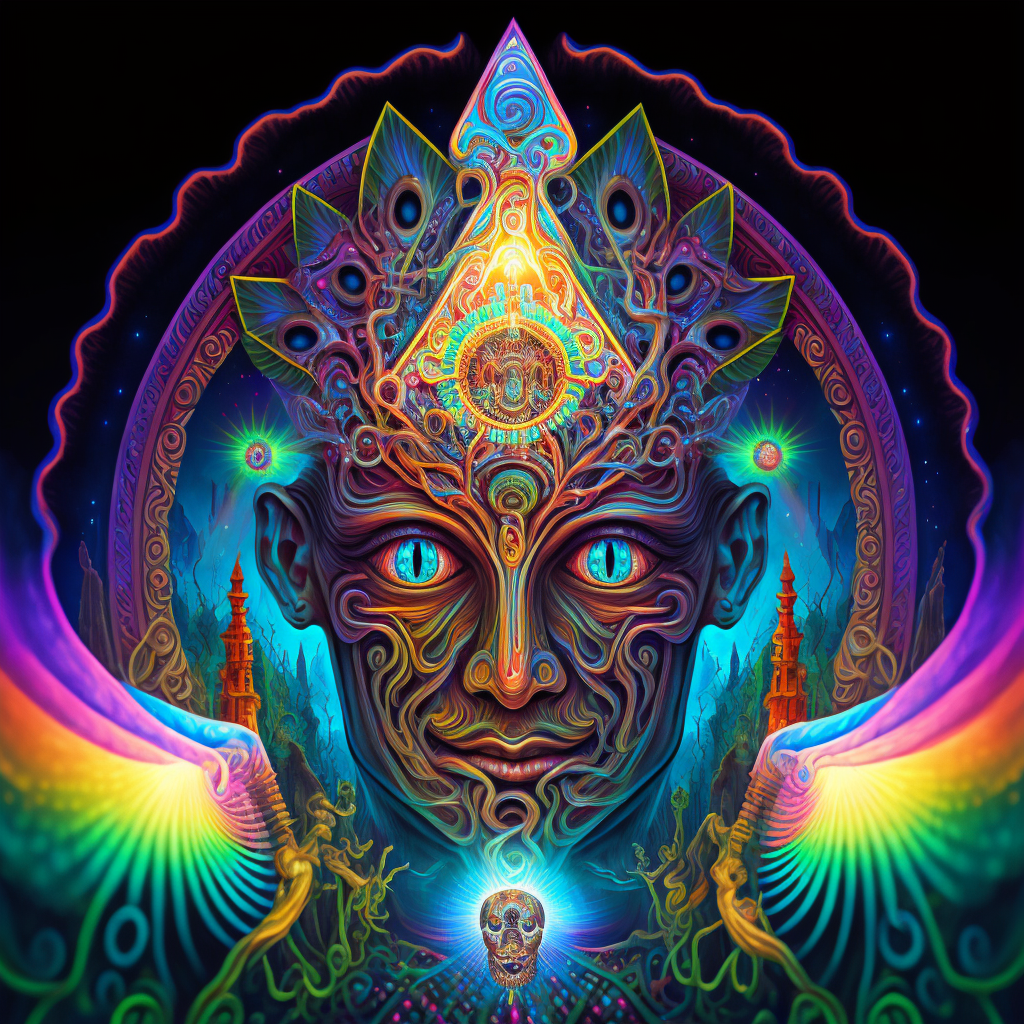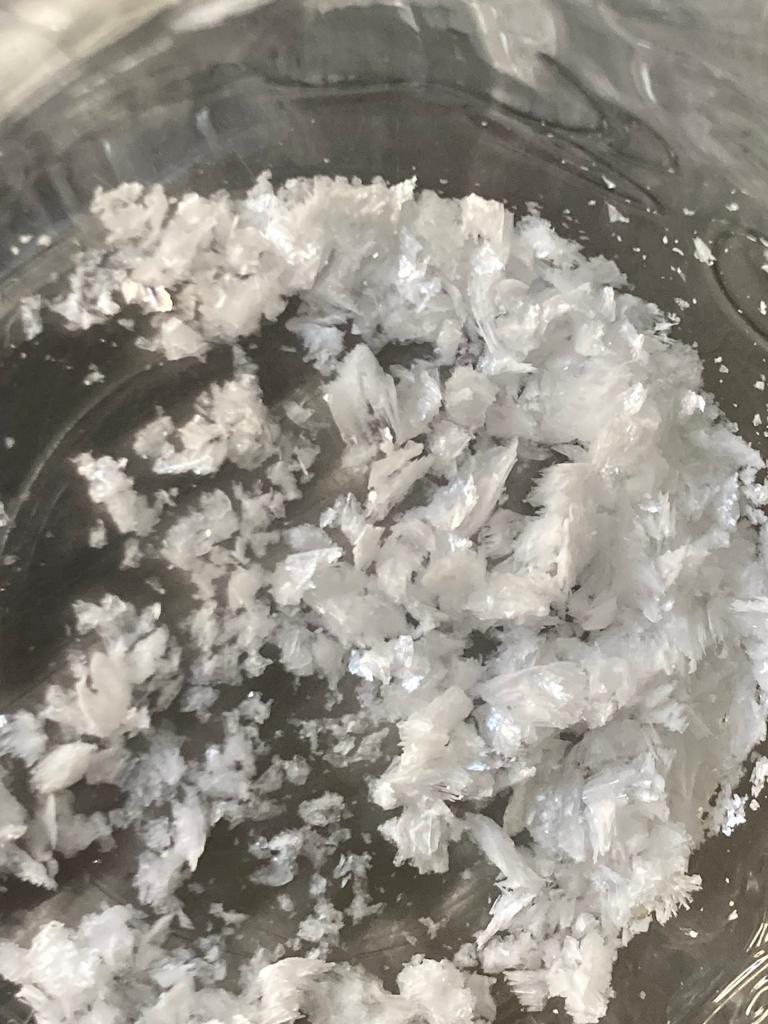
(HEMPEARTH)
DMT is an acronym for N,N-dimethyltryptamine. It’s a naturally occurring alkaloid. Trace amounts of this molecule can be found in various plant and animal species. The human brain manufactures its own DMT in the pineal gland.
DMT is closely related to serotonin — one of the primary neurotransmitters in the brain.
Serotonin is responsible for regulating emotion, conscious thought, and much more. DMT is believed to play a similar role, and many experts believe it’s responsible for inducing dream states while we sleep.
DMT (AKA the “spirit molecule”) is best known for its ability to induce dreamlike states of consciousness.
This naturally-produced molecule produces intense visions of bright kaleidoscope fractals and blurs the lines between what we consider “self” to be. It warps our perception of time and space, induces life-altering insights, and expands the mind in ways you would never have thought possible.
DMT comes in a few different forms:
- A crystalline powder that can be smoked or vaped for a powerful hallucinogenic experience
- A semi-poisonous toad venom from Bufo alvarius (Colorado River Toad)
- A dark brown, bitter-tasting brew called ayahuasca
- A brownish herb mixture called changa
- A fine brown powder called yopo that’s blown into the nostrils
- Various novel DMT research chemicals
DMT: Specs & Technical Details
| Chemical Name | N,N-Dimethyltryptamine |
| Level of Risk | Low |
| Street Names | Dimitri, The Spirit Molecule, God Molecule |
| Duration of Effects | 30–60 minutes |

DMT: “The Spirit Molecule”
The abundance of this molecule throughout the natural world, along with its intense psychoactive effects, is what’s led to the common name — the spirit molecule.
The first release of DMT in a growing fetus around the 7th week of pregnancy could indicate the “entrance of the spirit” into the body.
Likewise, DMT is released again at the time of death, which has many suggesting this molecule may act as both an entrance and an exit for the soul from the body.
There Are Several Different Types of DMT
Depending on the type of DMT, the experience can range anywhere from vivid fractal patterns to a complete dissolution of the mind and body.
While all DMT shares the same name, the effects can be exceptionally different from each other.
N,N-DMT
(N,N-Dimethyltryptamine)
This form of DMT is most abundant in the natural world — including the human brain. When you drink a brew of ayahuasca, this is the predominant form of DMT you’ll use.
This form of DMT has a strong visual component but can also lead users to dissociate from reality.
5-MeO DMT
(5-methoxy-Dimethyltryptamine)
This form of DMT is differentiated from N,N-DMT by its short duration of effects (10 – 20 minutes in total) and extreme potency. 5-MeO-DMT is roughly six times as potent as N,N-DMT, and has much less of a visual component.
This version of DMT can be found in nature in a handful of plants such as Mucuna pruriens, Mimosa pudica, Anadenanthera peregrina (yopo), and a few species of cacti. It’s also found in a couple of mushroom species (Amanita citrina and Amanita porphyra) and some toads.
The most famous source of this type of DMT is the Sonoran Desert Toad (Bufo alvarius). This particular toad secretes 5-MeO-DMT, and a related compound called bufotenin as a defense mechanism to avoid being eaten by other animals. Along with DMT, these toads secrete a series of toxic compounds that can make using this toad dangerous if not prepared properly.
The use of these toads secretions or skin is a traditional sacrament called chansu. It involves ingesting or smoking the secretion to produce a psychoactive state.
5-MeO-DMT is also available in synthetic form, which can be snorted, smoked, or injected. This is the most sustainable, most affordable, and most common form of 5-MeO-DMT.
4-AcO DMT
(4-Acetoxy-N,N-dimethyltryptamine)
4-AcO-DMT is more closely related to psilocin — the active ingredient in magic mushrooms — than it is to the other forms of DMT. In fact, this compound is considered a prodrug of psilocin.
This means 4-AcO-DMT is converted into psilocybin by the body. The majority of this substances effects begin once it’s converted into psilocin by the liver. However, it also has some psychoactive effects on its own. Users who smoke 4-AcO-DMT report mild to moderate psychoactivity beginning within seconds. These effects can only come from the drug itself since inhalation bypasses first-pass liver metabolism — meaning it hasn’t yet been metabolized by the liver.
This form of DMT is not found in nature. It’s a semi-synthetic molecule, which means it’s made by modifying other compounds in a lab setting.
The effects of this psychedelic are very similar to magic mushrooms. It produces distortions in visual and auditory sensation, induces states of introspection, and can result in separation from ego in higher doses.
5-Bromo-DMT
5-Bromo-DMT (AKA. “SpongeBob DMT”) is a lesser-known form of DMT found in three species of sea sponge.
This type of DMT only has mild psychoactivity but shares similar effects of low-dose N,N,DMT or 5-MeO-DMT. The effects are best described as lucid — rather than psychedelic like the other main forms of DMT.
Ayahuasca
Ayahuasca is a traditional plant preparation from the Amazon rainforest. It involves the combination of two plants — the ayahuasca vine, and then either Mimosa pudica or Psychotria viridis.
The active ingredient in ayahuasca is DMT, which is presented in the forms of N,N-DMT, as well as a weaker source of 5-MeO-DMT.
The first component of ayahuasca is a plant high in DMT. The most common plant is Mimosa pudica, but other species can also be used depending on what’s locally available.
The ayahuasca vine (Banisteriopsis caapi) is then added to the brew as a source of MAO inhibition.
MAO is an enzyme in the body that breaks down DMT almost immediately. Consuming a brew of pure Mimosa pudica would have no hallucinogenic effects — but when combined with the ayahuasca vine to prevent the breakdown of DMT, it produces one of the most powerfully psychoactive substances on earth.
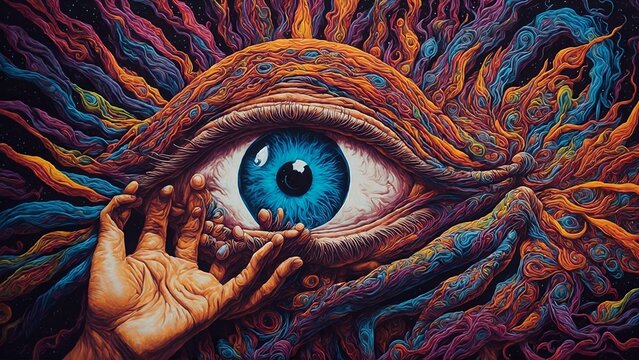
What’s The Dose of DMT?
DMT is extremely potent — only a very small dose is necessary to profoundly impact perception and thought. The dose depends on the type of DMT being used, as well as the mode of administration.
Inhalation and injection require the smallest doses, while oral and insufflation require much larger doses to produce similar effects.
What Does DMT Feel Like?
What a question. If you ask anybody who’s used DMT what it feels like, you’re likely to get inundated with stories involving death and rebirth, separation from reality, contact with otherworldly beings, and altered perception of time.
The effects of DMT can be intense. Your experience can range from being profoundly positive to terrifying.
Most people who use DMT consider it to be one of the most significant experiences of their life — often prompting a major shift in thinking. People have changed careers, quit drugs and alcohol, or moved abroad due to using DMT.
Others have experienced scary or uncomfortable visions of alien abduction or ego death.
While the effects of DMT are short (especially 5-MeO-DMT), the user often experiences a decoupling with time during the trip. It’s not uncommon for someone to come out of a 10 minute DMT trip after experiencing what feels like a lifetime (or several lifetimes) within the trip itself.
Common experiences from DMT include:
- Alien abduction or contact with otherworldly beings
- Altered perception of time
- Distortions in color, sound, and texture
- Ego death and dissolution
- Fractal or kaleidoscope vision
- Light trails or double vision
- Out-of-body experiences
- Unexplainable coincidences
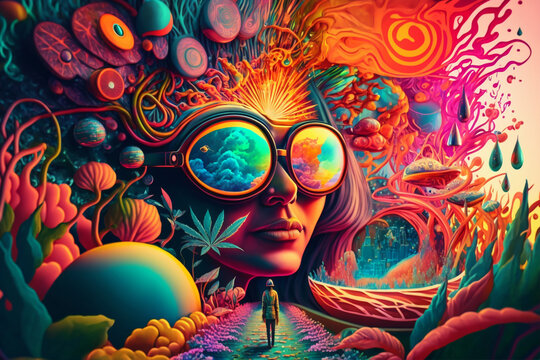
How Long Do the Effects of DMT Last?
DMT itself has a very short duration of effects. It’s rapidly metabolized and removed from the body by the joint efforts of the liver and kidneys.
Smoked or injected DMT only lasts about 30 minutes before concentrations drop so low it no longer has any effect on the body. You’ll usually start to feel the effects of DMT in these forms within a few seconds, which peak around the 10-minute mark.
Ayahuasca usually takes about an hour to take effect, peaks by around 90 minutes, and then slowly taper off over the course of about 6 hours.
What is Ego Death?
The ego is described as the combination of three elements:
- Self-image — the view someone has of themselves
- Self-esteem — the value someone has for themselves
- Self-identity — the beliefs and ideologies an individual holds
In essence, “ego” refers to our experience of “self” — who we are and what we believe. It’s a tool we use to quantify the experience of life and reality. This concept is used to differentiate “self” from “other.”
Our ego is generally a good thing — it helps catalog and organize our experiences to help filter through the endless stream of information we’re exposed to on a daily basis — most of which is irrelevant. It also helps us separate opposites — such as good and evil, right and wrong, or love and hate.
Ego death is a complete loss of subjective “self.” The lines between”self’ and “other” become blurred and may no longer be recognizable. Without an ego, we’re given a completely unbiased view of the world. It can be said that ego death creates a state where you’re more spontaneous and in the moment. We feel more connected with the world around us and take on a more objective view of the world.
Experiencing ego death is one of the primary reasons people seek out the assistance of psychedelics, but it can also be achieved in fleeting moments through meditation or breathwork.
Ego death can feel scary at first. Our entire basis of reality comes from our understanding of self and others. Losing a grasp on the differences between the two can be terrifying — especially the first time it happens. It can feel like you’re actually dying.
The feeling of death and rebirth are extremely common when using DMT — which is a direct result of what we consider “ego death.”
DMT & The Default Mode Network (DMN)
From a scientific perspective, ego death is a dampening of the default mode network (DMN) — which is thought to be responsible for maintaining our perception of time, memory formation and retrieval, and the ability to separate self and others.
The DMN is involved with repetition tasks as well. It’s used to make the things we do more efficient. Have you ever left your house and then suddenly wondered if you’ve locked the front door?
Psychedelics like DMT are thought to “reset” the DMN.
This resetting of the DMN is thought to be the reason DMT and other psychedelics can lead to such dramatic shifts in perception and breaking of old habits or ideologies.
A good example of this is drug addiction. Users may feel both physically and mentally addicted to a substance. They can’t break the cycle of addiction because their DMN is conditioned to using the drugs whenever they feel stressed or sad.
Resetting the DMN is often enough to break this cycle, allowing addicts to go through the process of detoxing and breaking the addiction without the burden of habitually returning for the drug when in need of a coping mechanism.
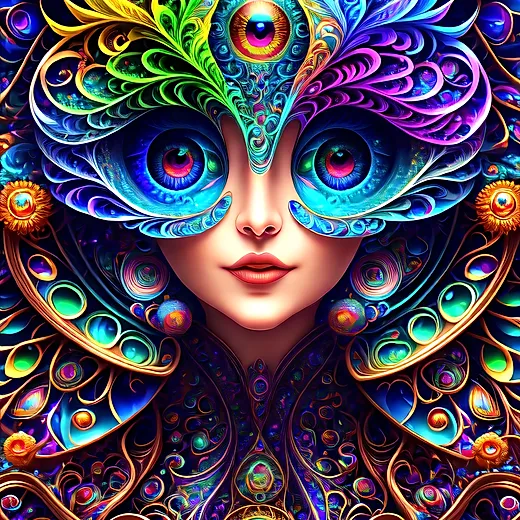
How Strong is DMT Compared to Other Psychedelics?
DMT is one of the most powerful psychedelic compounds on earth. N,N-DMT (found in ayahuasca) is rated at an 8 out of 10 on the psychedelic scale, while 5-MeO-DMT falls closer to 10/10So how does DMT compare to other psychedelics?
DMT vs. LSD
DMT and LSD (lysergic acid diethylamide) share a similar structure, and both interact with the 5HT2A receptors to produce most of their psychedelic effects.
In general, the effects of both of these substances are very similar, but DMT is stronger from a psychoactive perspective. You’re much more likely to have an out-of-body experience on DMT than LSD.
DMT vs. Psilocybin
N,N-DMT, and 5-MeO-DMT are very different from psilocybin (magic mushrooms) and psilocin in their effects. Psilocybin is known for producing a stronger “body high” with fewer visual components.
These forms of DMT, on the other hand, have a stronger visual component and out-of-body experiences.
4-AcO-DMT is the exception here. Its effects are very similar, if not identical, to psilocybin.
DMT vs. Ketamine
Ketamine works through completely different receptors compared to DMT, and therefore the effects are going to be very different. Ketamine is classified as an arylcyclohexylamine and is most similar to PCP, DCK.
Both DMT and ketamine can produce out-of-body experiences, but there are a lot of differences between the two.
The DMT experience is otherworldly and highly introspective at times. Ketamine, on the other hand, is best described as “shadowy” or “muffled.” It numbs the body and makes you feel as though you’re more of a spectator than experiencing the trip firsthand.In lower doses, ketamine feels very different and has much less visual component than DMT.
DMT vs. Mescaline
Mescaline has similar hallucinatory effects as DMT, but with a twist. This compound interacts much more strongly with the dopamine receptors, rather than focusing specifically on the serotonin receptors like DMT, LSD, or psilocybin.
So what does this mean in terms of effects?
Mescaline has a strong visual component and can result in a lot of introspective thoughts — but even in high doses, mescaline users remain coherent and clear-headed. Thoughts can be chaotic at times, and the change in perception can affect how we experience time, but at no point do we leave the body or experience ego death.
Benefits of DMT
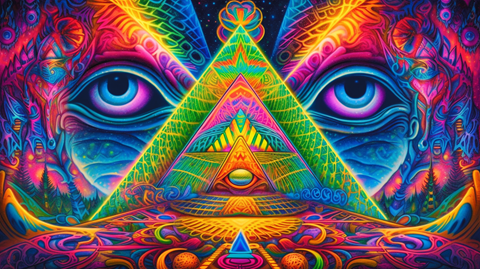
Emotional Benefits
One of the most profound effects of DMT is its impact on emotions. Users report the ability to identify emotional blockages and release of pent-up emotions, allowing them to confront and process feelings they might have suppressed or ignored. This cathartic experience can lead to a sense of inner peace and emotional clarity, which may improve overall emotional wellbeing. Additionally, many users report a heightened sense of compassion and empathy, allowing them to connect with others and better understand the emotions and experiences of those around them.
Psychological Benefits
The psychological benefits of DMT are equally impressive. It is known to provoke profound introspection and self-analysis, which can help users gain valuable insights into their lives, motivations, and the damage they have incurred as a consequence of Toxic Socialization. This self-awareness can lead to healing which in turn can help you better connect with your Spiritual Ego. Furthermore, research has indicated that DMT help alleviate symptoms of depression and anxiety, as it appears to reset neural pathways and promote a more balanced state of mind.
Spiritual Benefits
DMT is often referred to as the “God molecule” due to its potent ability to induce mystical experiences and spiritual awakenings. Users frequently report feelings of interconnectedness with the universe, a sense of oneness with all living beings, and a deeper understanding of their place in the grand scheme of existence. These connection experiences can lead to a more profound sense of purpose and a greater appreciation for the beauty and complexity of life. Many users also find that these spiritual insights remain with them long after the effects of the substance have worn off, leading to lasting positive changes in their outlook on life.
Physical Benefits
In addition to its emotional, psychological, and spiritual benefits, DMT has also been linked to several physical benefits. For instance, it has been found to help alleviate physical pain, making it a potential alternative to traditional painkillers. Furthermore, it has been shown to reduce inflammation in the body, which can be beneficial for individuals suffering from chronic inflammatory conditions. Inhaled in low doses it can also act as an aphrodisiac.
Neurogenesis: Stimulating the Growth of New Neurons
One of the most fascinating aspects of DMT is its potential role in neurogenesis, the process of creating new neurons in the brain. Studies have indicated that the substance may help promote the growth of new neurons, which could have significant implications for mental health and cognitive function. By stimulating neurogenesis, DMT may potentially help combat neurodegenerative disorders, enhance learning and memory, and improve overall brain health. While more research is needed to fully understand the mechanisms behind this phenomenon, these initial findings are incredibly promising.
DMT For Depression
Ayahuasca use has been shown to result in reduced ratings of “hopelessness” .
Other studies have shown dramatic improvements in depression scores lasting 21 days (or more) from a single dose of ayahuasca .
This research suggested DMT may offer significant long-term support for chronic depression. With that said, this research involving ayahuasca instead of pure DMT introduces some questions. Ayahuasca doesn’t contain just DMT; it’s also abundant in harmaline alkaloids as well — which are potent MAO inhibitors and have been shown to have direct antidepressant benefits of their own.
DMT For Addiction
There are a lot of studies highlighting this use for other psychoactive substances like psilocybin and LSD — both of which activate the same receptors as DMT.
Virtually all of the serotonin-dependant psychedelics (LSD, psilocybin, and mescaline) have shown impressive effects on alleviating addictive tendencies . DMT is a particularly interesting option because of its short duration of effects. It’s much more reasonable to administer DMT that lasts 15 – 30 minutes in an office setting compared to LSD or psilocybin — both of which can last several hours.
How DMT Works
DMT acts like the neurotransmitters glutamate and serotonin. It interacts with various receptors in the brain that cause a shift in neurochemical balance — producing what we experience as an altered perception of reality.
Serotonin Receptors
DMT works by interacting with our serotonin receptors — specifically through its effects on the 5HT2A receptors — which is the mechanism shared by most psychedelics (LSD, mescaline, MDMA, and psilocybin).
Serotonin is involved with numerous activities in the brain — from regulating mood and emotion to regulating the default mode network (DMN).
JJJ
The subtle differences between different psychedelics come down to the overflow effects these substances have on other receptors. Some of these receptors have a stronger impact on visual perception, others on mood or regulation of the DMN.
DMT, in particular, has been shown to interact with the 5-HT1A, 5-HT1B, 5-HT1D, 5-HT2A, 5-HT2B, 5-HT2C, 5-HT5A, 5-HT6, and 5-HT7 receptors .
TAAR1 Receptors
DMT has also been shown to activate the TAAR1 receptors — which are intimately involved with the regulation of neurotransmitters like dopamine in the brain. The impact of DMT’s ability to activate the TAAR1 receptors is still poorly understood, but it’s believed this interaction plays a key role in the anti-addictive qualities of DMT.
The Sigma-1 Receptors
DMT also activates the sigma-1 receptor — which is a chaperone between the endoplasmic reticulum and mitochondria inside our cells.
The sigma-1 receptor is used to transfer stress from the ER to the nucleus. It’s thought that this interaction of DMT can enhance the production of anti-stress proteins and mitigate oxidative or hypoxic damage .
This is also thought to be the primary mechanism involved with the increased expression of BDNF (brain-derived neurotrophic factor) — which is associated with increased neuroplasticity after using DMT . Other reports suggest the sigma-1 receptor plays may help to improve focus and memory .
Undiscovered Hallucinogenic Receptors
Most of the psychoactive effects of DMT come from activation of the 5HT2A receptor — but this isn’t the whole story. There have been several prominent researchers that suggest there may very well be another yet-to-be-discovered “hallucinogen” receptor .
DMT Metabolism

Metabolism refers to the enzymatic modification of compounds in the body. Virtually any psychedelic substance, medication, or supplement is metabolized by the liver — converting it into something that’s easier for the kidneys to remove from the body.
DMT is rapidly metabolized by the body. Peak levels are reached within 15 minutes and are found below detection levels within 1 hour. Only 0.16% of intramuscular DMT injections remain in the blood after 24 hours .
Oral DMT is metabolized even faster. Once this compound is absorbed through the gut, it’s almost completely deactivated by first-pass liver metabolism.
DMT is metabolized almost exclusively by monoamine oxidase A. This enzyme is tasked with breaking down all the monoamine-based neurotransmitters, including serotonin, noradrenaline, and dopamine.
How is DMT Used
As we’ve already touched on several times throughout this article, there are many different ways to use DMT.
Here’s a quick breakdown of each method:
Smoking
Pure crystalline DMT can be smoked in a pipe or bong relatively easily. This method produces virtually immediate effects lasting around 15 minutes.
Vaping
DMT vape pens were a huge improvement to smoking it. This form of using DMT is much more gentle on the throat and lungs.
Injecting
Injecting DMT is the most common method used in scientific research. It offers immediate effects, has a short duration of effects, and allows doctors and medical researchers to administer consistent doses of DMT from one patient to the next.
Insufflation (Snorting)
One of the traditional methods of using a DMT-containing herb called yopo is administered through insufflation. The process involves blowing the dried and powdered yopo seeds directly into the nasal cavity. The DMT is then absorbed through the microcapillaries lining the inside of the nose.
Drinking (Ayahuasca)
The only drinkable form of DMT you’re likely to find is ayahuasca.
